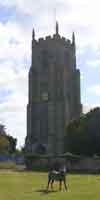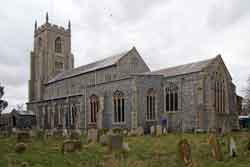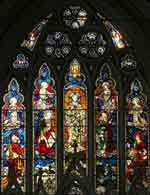Stained Glass of St Mary's Church, North Elmham

 It is hard to imagine that this small Norfolk village was once the centre of East Anglia’s first diocese. Even more amazing is that the ruins from the original Saxon cathedral can still be viewed in the village. Subsequently when Herbert de Losinga began to build his new Cathedral in Norwich in 1096, he built the first parish church here. Little of the Norman origins remain, however, there is much evidence of medieval work including : the distinctive 14th century tower, the 15th century clerestorey and the rood screen dado which features an array of painted figures. The latter was “discovered” under the pew floors in the mid 19th century when the church was being extensively restored. Remnants of 14th century glass can still be viewed in the church much of it displaying the green, red & yellow colour palette typically associated with the period. This is supplemented by Victorian work.
It is hard to imagine that this small Norfolk village was once the centre of East Anglia’s first diocese. Even more amazing is that the ruins from the original Saxon cathedral can still be viewed in the village. Subsequently when Herbert de Losinga began to build his new Cathedral in Norwich in 1096, he built the first parish church here. Little of the Norman origins remain, however, there is much evidence of medieval work including : the distinctive 14th century tower, the 15th century clerestorey and the rood screen dado which features an array of painted figures. The latter was “discovered” under the pew floors in the mid 19th century when the church was being extensively restored. Remnants of 14th century glass can still be viewed in the church much of it displaying the green, red & yellow colour palette typically associated with the period. This is supplemented by Victorian work.
For further information and to view the details of each window click the ![]() boxes below. For a downloadable and printable fact sheet click
boxes below. For a downloadable and printable fact sheet click ![]()










